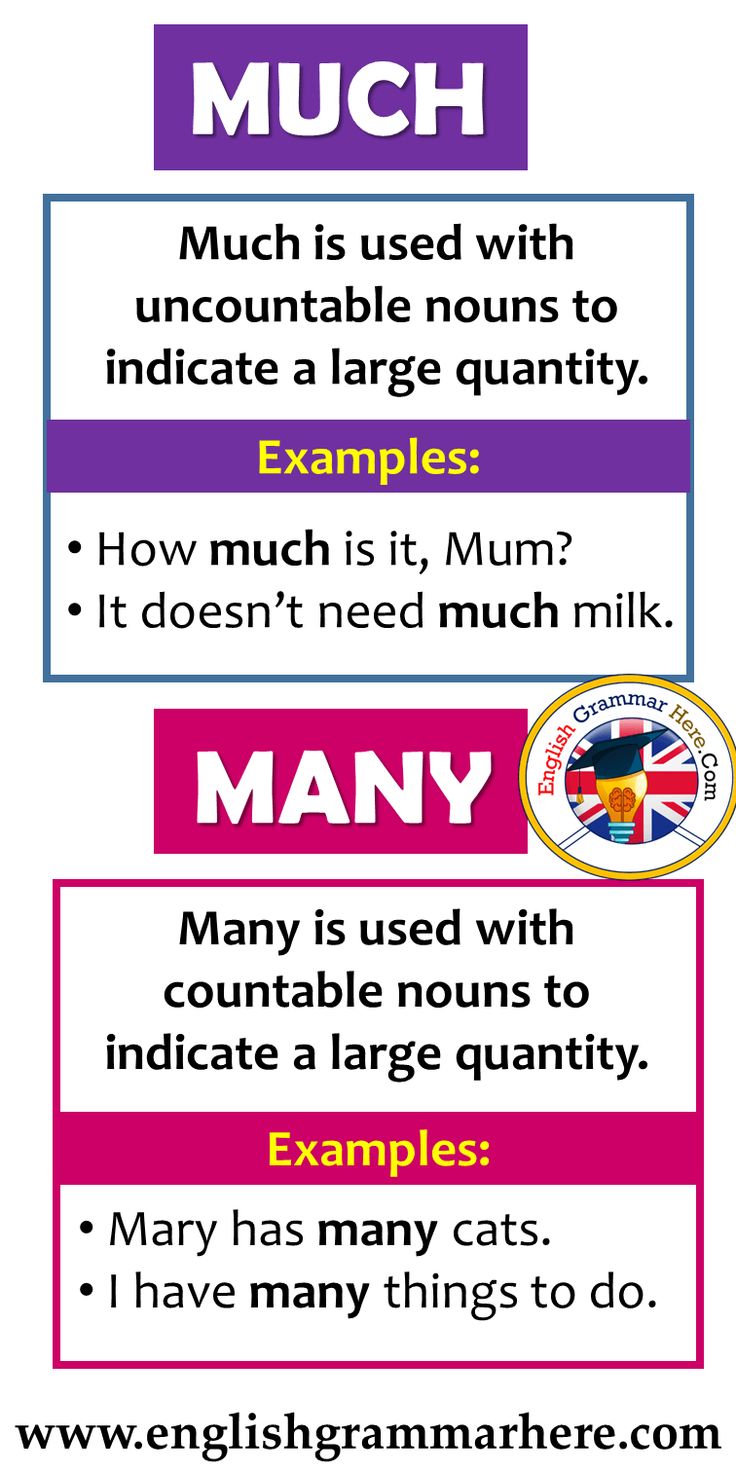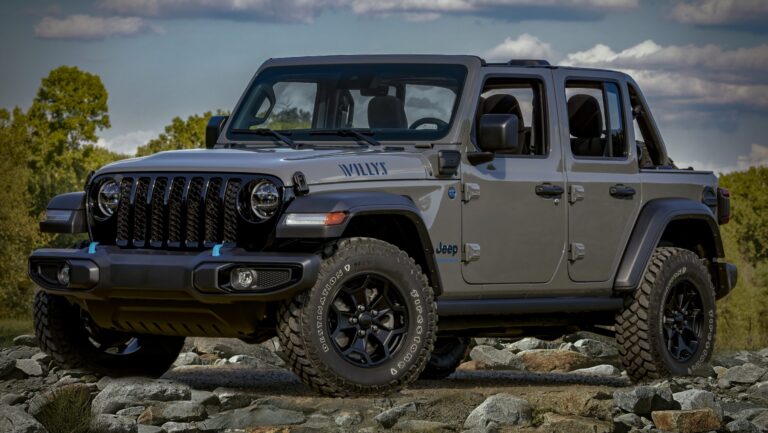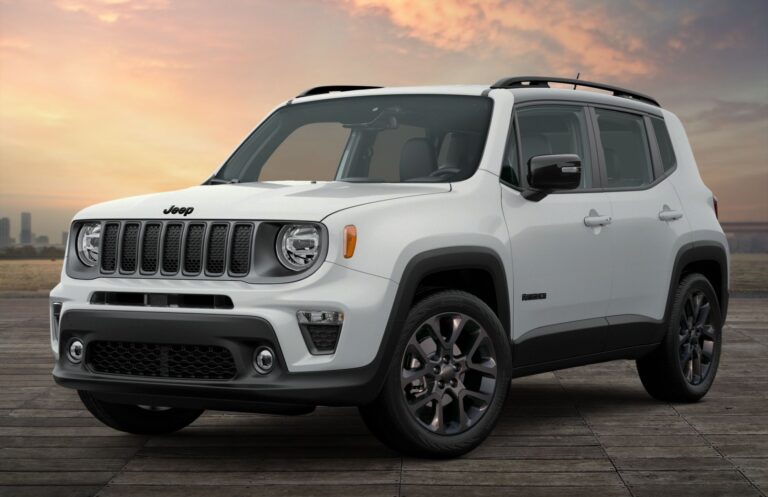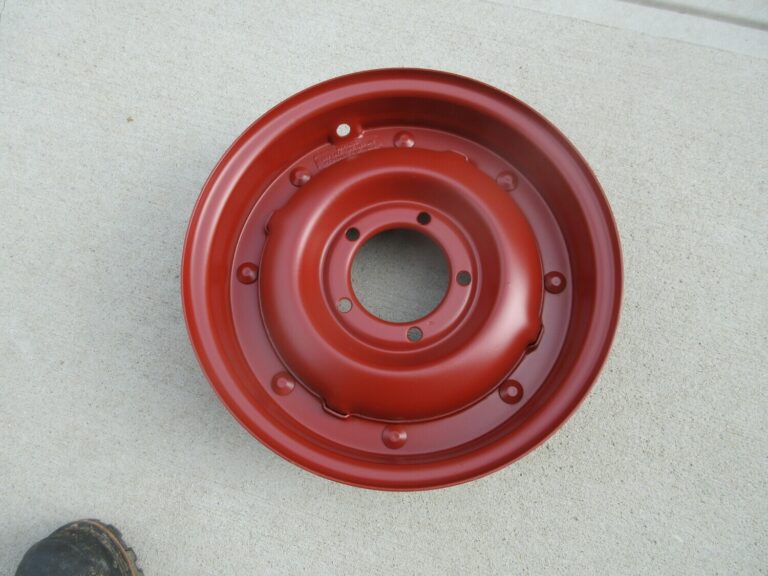How Much Does A Jeep Wrangler Oil Change Cost? Navigating the Essential Maintenance Expense
How Much Does A Jeep Wrangler Oil Change Cost? Navigating the Essential Maintenance Expense jeeps.truckstrend.com
For many, a Jeep Wrangler is more than just a vehicle; it’s a lifestyle, an emblem of adventure, and a rugged companion on countless journeys. Whether you’re conquering rocky trails or cruising city streets, keeping your Wrangler in peak condition is paramount. Among the most fundamental and critical maintenance tasks is the regular oil change. Neglecting this simple procedure can lead to severe engine damage, reduced performance, and costly repairs down the line. But how much does this essential service truly cost?
The price of a Jeep Wrangler oil change isn’t a fixed number; it’s a dynamic figure influenced by a variety of factors, including the type of oil used, where you get the service done, your Wrangler’s specific model year and engine, and even your geographic location. Understanding these variables is key to budgeting effectively and ensuring your beloved Jeep receives the care it deserves without breaking the bank. This comprehensive guide will break down all aspects of Jeep Wrangler oil change costs, offering insights, practical advice, and a clear overview to help you make informed decisions for your vehicle’s longevity.
How Much Does A Jeep Wrangler Oil Change Cost? Navigating the Essential Maintenance Expense
Understanding the Importance of Regular Oil Changes for Your Wrangler
Before delving into the costs, it’s crucial to grasp why regular oil changes are non-negotiable for your Jeep Wrangler. Engine oil is the lifeblood of your vehicle, performing several vital functions:
- Lubrication: Oil creates a thin film between moving engine parts (pistons, camshafts, bearings) to reduce friction and wear, preventing premature failure.
- Cooling: As engine parts rub together, they generate heat. Oil absorbs and dissipates this heat, helping to regulate the engine’s temperature.
- Cleaning: Engine oil contains detergents and dispersants that pick up dirt, sludge, and microscopic metal particles, preventing them from accumulating and causing damage.
- Corrosion Protection: Oil coats internal engine components, protecting them from rust and corrosion, especially during periods of inactivity.
- Sealing: Oil helps to create a seal between the piston rings and cylinder walls, ensuring proper compression and power output.

Over time, engine oil degrades, loses its viscosity, and becomes contaminated with combustion byproducts and debris. When oil breaks down, it loses its ability to lubricate and protect effectively, leading to increased friction, overheating, and potential engine seizure. For a Jeep Wrangler, which often endures more demanding conditions like off-roading, towing, or extreme temperatures, maintaining pristine oil quality is even more critical. Adhering to the manufacturer’s recommended oil change intervals – typically indicated by your Wrangler’s oil life monitoring system or specified in the owner’s manual – is the best way to safeguard your investment and ensure years of reliable performance.
Factors Influencing Jeep Wrangler Oil Change Cost
The cost of an oil change for your Jeep Wrangler can vary significantly based on several key factors. Understanding these will help you anticipate expenses and choose the best option for your budget and needs.
1. DIY vs. Professional Service

This is often the first decision a Wrangler owner faces, and it has the most significant impact on cost.
- Do-It-Yourself (DIY): Changing your own oil is generally the cheapest option. You only pay for the materials (oil and filter) and potentially some tools if you don’t already own them.
- Pros: Significant cost savings, control over parts used, satisfaction of doing it yourself, learning experience.
- Cons: Requires basic mechanical knowledge, specialized tools (jack, jack stands, oil filter wrench, drain pan), time commitment, potential for mess, proper disposal of used oil.

- Professional Service: Having a mechanic or service center perform the oil change means paying for labor, the cost of parts, and overhead.
- Pros: Convenience, expertise, proper disposal of used oil, often includes multi-point inspection, service history recorded.
- Cons: Higher cost compared to DIY.
2. Type of Oil
The type of engine oil used is a primary cost driver. Modern Jeep Wranglers, especially those with newer engines, almost exclusively recommend or require synthetic oil.
- Conventional Oil: Made from crude oil, it’s the least expensive option. However, it’s rarely recommended for modern Wrangler engines due to its limited performance in extreme temperatures and shorter lifespan.
- Cost Range (per quart): $3 – $6
- Synthetic Blend Oil: A mix of conventional and synthetic base oils, offering better protection than conventional oil at a lower cost than full synthetic. Some older Wrangler models might use this.
- Cost Range (per quart): $5 – $8
- Full Synthetic Oil: Engineered for superior performance, durability, and protection across a wider range of temperatures. It’s the recommended or required oil for most modern Jeep Wranglers (e.g., JL and JK models with the Pentastar V6, 2.0L Turbo, or EcoDiesel engines). It’s the most expensive option but offers the best protection and longest service intervals.
- Cost Range (per quart): $7 – $12+ (Premium brands or Mopar specific can be higher)
Note: A Jeep Wrangler Pentastar V6 typically requires around 6 quarts of oil, while the 2.0L Turbo requires 5 quarts, and the 3.0L EcoDiesel around 8 quarts. Always check your owner’s manual for exact capacity and recommended oil specifications.
3. Type of Oil Filter
While less impactful than oil type, the filter quality can slightly affect the cost. OEM (Original Equipment Manufacturer) filters are generally recommended for optimal fit and filtration, but quality aftermarket filters are also available.
- Cost Range: $5 – $25 (depending on brand and type)
4. Vehicle Model Year and Engine Type
Newer Wrangler models, particularly those with advanced engines like the 2.0L Turbo or 3.0L EcoDiesel, often have specific oil requirements (e.g., specific viscosity grades or API ratings) that can necessitate more expensive, specialized synthetic oils. Older models might have more flexibility. The oil capacity also varies by engine, directly impacting the total cost of the oil.
5. Location/Geographic Region
Labor rates for mechanics vary significantly by region. Major metropolitan areas typically have higher labor costs than rural areas, directly impacting the price of a professional oil change.
6. Service Provider
Where you get your oil changed also plays a crucial role in the final bill:
- Dealerships: Typically the most expensive due to higher labor rates, use of OEM parts, and specialized technicians. However, they often offer certified service and keep meticulous service records.
- Independent Mechanics/Garages: Often a good balance of cost and quality. Prices are usually lower than dealerships, and you can build a relationship with a trusted mechanic. Quality can vary, so research and reviews are important.
- Quick Lube Chains (e.g., Jiffy Lube, Valvoline, Pep Boys): Generally the cheapest and fastest option. They often have attractive introductory prices but may use lower-cost oil/filters and sometimes engage in upselling additional services.
7. Additional Services
Sometimes, an oil change is bundled with other services like tire rotations, fluid top-offs, or multi-point inspections. While these can add to the total bill, they often provide value by addressing other maintenance needs. Be wary of aggressive upselling, however.
DIY Jeep Wrangler Oil Change: A Step-by-Step Guide (and Cost Breakdown)
Performing your own oil change can save you money and give you a deeper understanding of your Wrangler.
Tools and Materials You’ll Need:
- New Engine Oil: Refer to your owner’s manual for the correct type and quantity (e.g., Mopar MaxPro 5W-20 or 5W-30 for Pentastar, 0W-20 for 2.0L Turbo, 5W-40 for EcoDiesel).
- New Oil Filter: OEM or high-quality aftermarket.
- Oil Filter Wrench: Specific size for your Wrangler’s filter.
- Socket Wrench and Correct Socket: For the drain plug (usually 13mm or 15mm).
- Drain Pan: Large enough to hold all the old oil.
- Funnel: To pour new oil without spilling.
- Jack and Jack Stands: For safety, never rely solely on a jack. Ramps are also an option.
- Gloves, Rags, Cardboard: For cleanliness and spill protection.
- Torque Wrench (Optional but Recommended): For tightening the drain plug and filter to specifications.
Estimated DIY Cost Breakdown:
- Full Synthetic Oil (6 quarts @ $8-$10/quart): $48 – $60
- Oil Filter: $10 – $25
- Basic Tools (if you don’t have them, amortized over many changes): ~$50-$100 (initial investment for jack, stands, wrenches)
- Total Estimated DIY Cost (per change, excluding initial tool cost): $58 – $85
Step-by-Step Guide:
- Warm Up the Engine: Drive your Wrangler for 5-10 minutes to warm the oil, making it flow more easily.
- Park and Secure: Park on a level surface, engage the parking brake, and put the transmission in park (P).
- Lift and Secure: Use a jack to raise the front of your Wrangler and place jack stands securely under the frame rails. Never work under a vehicle supported only by a jack.
- Locate Drain Plug: Find the oil pan and the drain plug (usually on the lowest point of the pan). Place your drain pan directly underneath.
- Drain Oil: Using your socket wrench, carefully loosen and remove the drain plug. The hot oil will stream out quickly, so be ready. Let it drain completely.
- Replace Drain Plug: Once drained, clean the drain plug and replace its washer (if applicable). Reinstall the drain plug and tighten it to the manufacturer’s specified torque (check your owner’s manual or a service manual). Do not overtighten!
- Locate and Remove Oil Filter: Depending on your Wrangler’s engine, the filter will be a canister type (like on the Pentastar V6) or a spin-on type. Place a small pan or rags underneath to catch drips. Use your oil filter wrench to loosen and remove the old filter.
- Prepare and Install New Filter: Apply a thin film of new oil to the rubber gasket of the new filter. Install the new filter, tightening it by hand until snug, then give it an additional 1/4 to 1/2 turn as specified by the filter manufacturer (or use a torque wrench if recommended).
- Lower Vehicle: Carefully lower your Wrangler off the jack stands.
- Add New Oil: Remove the oil filler cap on top of the engine. Place your funnel in the opening and slowly pour in the correct amount of new oil as specified in your owner’s manual.
- Check Oil Level: After pouring, wait a few minutes for the oil to settle. Check the dipstick, ensuring the level is within the "full" range. Add more if needed.
- Start Engine and Check for Leaks: Start the engine and let it run for a minute or two. Check underneath for any leaks around the drain plug or oil filter.
- Final Oil Level Check: Turn off the engine, wait a few minutes, and check the dipstick again. Top off if necessary.
- Reset Oil Life Monitor: Consult your owner’s manual for instructions on how to reset the oil life monitoring system on your dashboard.
- Dispose of Used Oil: Pour the old oil from your drain pan into sealable containers (original oil bottles work well). Take it to an auto parts store, service station, or recycling center that accepts used oil for proper disposal. Never pour it down the drain or into the ground.
Professional Jeep Wrangler Oil Change: Options and Expectations
If DIY isn’t for you, professional service is the way to go.
1. Dealership Service
- Pros: Factory-trained technicians, use of OEM parts, adherence to manufacturer specifications, detailed service records for warranty purposes, often comfortable waiting areas.
- Cons: Typically the most expensive option.
- Estimated Cost: $80 – $150+ (for full synthetic)
2. Independent Mechanic/Garage
- Pros: Often more affordable than dealerships, personalized service, potential to build a long-term relationship with a trusted mechanic, can sometimes use quality aftermarket parts to save money.
- Cons: Quality can vary, may not always use OEM parts unless requested, less likely to have specific manufacturer diagnostic tools.
- Estimated Cost: $60 – $100 (for full synthetic)
3. Quick Lube Chains (e.g., Jiffy Lube, Valvoline, Pep Boys)
- Pros: Fast, convenient, often the cheapest upfront cost, no appointment usually needed.
- Cons: May use generic oil/filters, potential for upselling additional services, less specialized knowledge for specific Wrangler nuances, sometimes rushed service leading to mistakes (e.g., overtightening drain plugs).
- Estimated Cost: $50 – $90 (for full synthetic, often with specials)
What to Expect During a Professional Service:
A standard professional oil change should include:
- Draining the old engine oil.
- Replacing the oil filter.
- Refilling with the correct type and amount of new engine oil.
- A visual inspection of other fluids (washer fluid, coolant, brake fluid) and topping them off if needed.
- Checking tire pressure.
- Resetting the oil life monitor.
- Often, a basic multi-point inspection (lights, belts, hoses, battery, etc.).
Tips for Saving Money on Your Wrangler Oil Change
Even with fluctuating prices, there are ways to minimize the cost of maintaining your Jeep’s engine:
- DIY if Comfortable: As discussed, this is the most direct way to save money.
- Look for Coupons and Specials: Dealerships and quick lube chains frequently offer discounts on oil changes. Check their websites or local flyers.
- Buy Oil and Filter in Bulk/On Sale: If you DIY, stock up on your preferred oil and filters when they go on sale.
- Join Loyalty Programs: Some quick lube chains or auto parts stores offer loyalty programs that can lead to discounts.
- Shop Around for Quotes: Call a few independent mechanics in your area to compare prices before scheduling.
- Don’t Over-Change: Follow your Wrangler’s oil life monitoring system or the manufacturer’s recommended intervals. Changing oil too frequently is unnecessary and wasteful.
- Decline Unnecessary Upsells: Be firm if a service advisor tries to push services you don’t need. Always ask for an explanation and refer to your owner’s manual for recommended maintenance schedules.
Common Challenges and Solutions
While an oil change is routine, minor issues can arise:
- Stripped Drain Plug or Oil Pan Threads: This is often caused by overtightening.
- Solution: If minor, a new oversized drain plug might work. If severe, the oil pan may need to be replaced or repaired by a professional. Always use a torque wrench when tightening.
- Stuck Oil Filter: Can be difficult to remove if overtightened previously.
- Solution: Use the correct oil filter wrench and apply steady pressure. A strap wrench can also be effective.
- Using the Wrong Oil Type: Putting conventional oil in an engine designed for synthetic can lead to accelerated wear.
- Solution: If caught immediately, drain and refill with the correct oil. If driven, it’s best to consult a mechanic.
- Improper Disposal of Used Oil: It’s illegal and harmful to the environment to pour used oil down the drain or on the ground.
- Solution: Always take used oil to designated recycling centers, auto parts stores, or service stations that accept it.
Comprehensive Oil Change Cost Table for Jeep Wrangler
This table provides estimated ranges for a full synthetic oil change for a modern Jeep Wrangler (e.g., JL/JK Pentastar V6, 2.0L Turbo). Prices can vary.
| Service Provider | Oil Type | Estimated Cost Range (USD) | Notes |
|---|---|---|---|
| DIY (Do-It-Yourself) | Full Synthetic | $58 – $85 | Cost for oil and filter only. Does not include initial tool purchase (jack, stands, wrenches, etc.). Requires time, basic mechanical skills, and proper disposal of used oil. |
| Independent Mechanic | Full Synthetic | $60 – $100 | Good balance of cost and quality. Often uses quality aftermarket or OEM parts. Service usually includes labor, parts, and fluid top-offs. Prices vary by location and shop reputation. |
| Quick Lube Chain | Full Synthetic | $50 – $90 | Often offers competitive pricing, especially with coupons. Fastest service. May use generic oil/filters. Be aware of potential upselling and ensure they use the correct oil type for your Wrangler. |
| Jeep Dealership | Full Synthetic | $80 – $150+ | Highest cost due to OEM parts, factory-trained technicians, and specialized equipment. Ensures warranty compliance. Often includes multi-point inspection and service history recording. |
| Older Wrangler (e.g., TJ/YJ) | Conventional | $30 – $60 | For older models that may use conventional or synthetic blend oil. Cost is lower due to cheaper oil. DIY is often even more cost-effective for these simpler engines. |
| Older Wrangler (e.g., TJ/YJ) | Synthetic Blend | $45 – $80 | A good compromise for older models looking for better protection than conventional. |
Prices are estimates and subject to change based on location, current oil prices, specific engine requirements, and promotional offers.
Frequently Asked Questions (FAQ)
Q1: How often should I change the oil in my Jeep Wrangler?
A1: For most modern Wranglers, it’s recommended to follow the Oil Change Indicator System (oil life monitor) on your dashboard, which typically suggests an oil change between 7,500 to 10,000 miles or once a year, whichever comes first. However, if you frequently engage in severe driving conditions (heavy off-roading, towing, extreme temperatures, dusty environments), more frequent changes (e.g., every 3,000-5,000 miles) may be advisable. Always consult your owner’s manual for specific recommendations.
Q2: What type of oil does my Jeep Wrangler need?
A2: This depends on your Wrangler’s model year and engine.
- Most JL/JK models with the 3.6L Pentastar V6: Typically require 5W-20 or 5W-30 full synthetic oil (Mopar recommends its MaxPro oil).
- 2.0L Turbo (JL): Requires 0W-20 full synthetic oil.
- 3.0L EcoDiesel (JL): Requires 5W-40 synthetic diesel oil, meeting specific Mopar or Cummins standards.
Always check your owner’s manual or the oil filler cap for the exact viscosity and API (American Petroleum Institute) or ACEA (European Automobile Manufacturers’ Association) specifications.
Q3: Can I use conventional oil in a new Wrangler?
A3: Generally, no. Modern Jeep Wrangler engines are engineered for the specific properties of full synthetic oil. Using conventional oil where synthetic is required can lead to increased engine wear, reduced performance, and potentially void your powertrain warranty.
Q4: Does an oil change always include a new filter?
A4: Yes, a proper oil change always includes replacing the old oil filter with a new one. The filter removes contaminants from the oil, and reusing an old, clogged filter defeats the purpose of new oil.
Q5: Will not changing my oil void my warranty?
A5: Yes, neglecting regular oil changes and other scheduled maintenance as outlined in your owner’s manual can absolutely void your powertrain warranty. Keep detailed records of all oil changes, especially if you do them yourself.
Q6: How long does a Jeep Wrangler oil change take?
A6:
- DIY: Can take anywhere from 30 minutes to 1.5 hours, depending on your experience and if you encounter any unexpected issues.
- Professional Service (Quick Lube): Typically 15-30 minutes.
- Professional Service (Independent Mechanic/Dealership): Usually 45 minutes to 1.5 hours, as they often include a multi-point inspection and other checks.
Q7: What’s the difference between Mopar oil and other brands?
A7: Mopar is the official parts and service brand for Chrysler, Dodge, Jeep, and Ram vehicles. Mopar oil (like MaxPro) is formulated to meet the exact specifications and performance requirements of Jeep engines. While many aftermarket synthetic oils also meet these specifications (e.g., API SN Plus, ILSAC GF-6), using Mopar oil ensures you’re getting the manufacturer’s recommended product. It often comes at a premium price.
Conclusion
Understanding "How Much Does A Jeep Wrangler Oil Change Cost" is more than just knowing a price tag; it’s about making an informed decision that balances cost, convenience, and the long-term health of your vehicle. Whether you choose the hands-on approach of DIY or opt for the convenience of a professional service, prioritizing regular oil changes with the correct type of oil is the single most important routine maintenance task you can perform for your beloved Jeep Wrangler.
An oil change is not an expense; it’s an investment. It protects your engine from premature wear, maintains fuel efficiency, preserves performance, and ultimately extends the life of your Wrangler, ensuring it remains a reliable companion for all your adventures, both on and off the beaten path. By being aware of the factors that influence cost and leveraging available tips, you can ensure your Jeep gets the best care without unnecessary financial strain.






